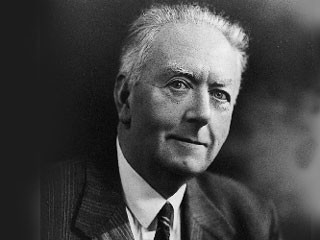
Arthur Holmes biography
Date of birth : 1890-01-14
Date of death : 1965-09-20
Birthplace : Heb-burn-on-Tyne, England
Nationality : British
Category : Arhitecture and Engineering
Last modified : 2010-12-13
Credited as : pioneer in geochronology, ,
The English geologist Arthur Holmes was a pioneer in geochronology, a gifted petrologist, and a lucid expositor of the physics and history of the earth's outer layers.
Arthur Holmes was born on Jan. 14, 1890, at Heb-burn-on-Tyne. At school he became interested in the age of the earth through reading Lord Kelvin's Addresses. Winning a scholarship to London's Imperial College, he graduated in geology and physics in 1911 and immediately began research on the radioactivity of rocks, guided by R. J. Strutt (later 4th Baron Rayleigh). Strutt's studies had revealed a source of heat within the earth, unsuspected when Kelvin made his estimate that not more than 40 million years had elapsed since the earth's crust had solidified from the molten state. Holmes shared with Strutt in overthrowing this conclusion, and he made successive advances toward establishing a new and much longer geological time scale, eventually showing the earth to be at least 4.5 billion years old.
Holmes's researches were twice interrupted by participation as geologist in commercial explorations, first in Mozambique (1911-1912), where he contracted tropical diseases which precluded military service in World War I, and in Burma (1921-1924); the latter expedition failed, and he had to sue for his pay on return to England.
Holmes was demonstrator in geology at the Imperial College from 1912 to 1921, where he wrote three books and published many scientific memoirs. From 1924 to 1943 he headed the geology department of Durham University, which gained international fame as a center of petrological research. He was regius professor of geology and mineralogy at the University of Edinburgh from 1943 until his retirement, in poor health, in 1956. While at Durham his wife died in 1938; in 1939 he married the distinguished petrologist Doris L. Reynolds, with whom he made important researches on the evolution of igneous rock.
Holmes's work touched nearly all aspects of geology except paleontology. His geological researches were widespread, concerning India, Mozambique, and elsewhere in Africa, besides his native Britain. His textbook Principles of Physical Geology (1944; 2d ed. 1965) is considered a classic. Though a man of quiet demeanor, whose main outside interest was music, he did not shrink from the controversies that have figured so notably in the history of his science. He was one of the earliest and most forceful supporters of the theory of continental drift and held that it must be produced by convection currents in the substratum of the crust. In his textbook Holmes gives some diagrams describing the formation of new ocean floor by rising materials—diagrams which are almost prophetic in their anticipation of later results. He died, after a prolonged illness, in London on Sept. 20, 1965.
Information on Arthur Holmes can be found in W. B. Harland, A. Gilbert Smith, and B. Wilcock, eds., The Phanerozoic Time-Scale (1964).
















